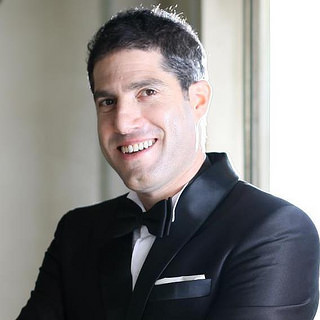
한국인들을 보면, 보통 장기적 관점에서의 결과물을 바라보고 짜는 전략계획에 강점을 가진 듯 보입니다. 저 또한 한국에 살면서 이런 식의 자세를 참 좋아하게 되었는데요. 허나 만약 스타트업에 빗대보자면 이런 마인드셋 자체는 핸디캡이 되어버리곤 합니다. 그리고 저는 한국이 세계적으로 성공한 스타트업을 배출해내는데 어려움을 겪어왔다는 점에서 이를 결코 우연이라 생각하지도 않구요. 장기적 관점에서 바라보는 사고방식은 정말 많은 문제점들을 야기한답니다.
그럼 지금부터는 이스라엘 스타트업들의 평범한 타임라인을 살펴보도록 하지요. 지금 제가 여기서 이스라엘의 경우를 예로 든 이유는, 만약 수영을 잘하고 싶다면 마이클 펠프스를, 달리기를 잘하고 싶다면 우사인 볼트를 보듯, 스타트업 세계에서만큼은 이스라엘 회사들이 펠프스이자 볼트이기 때문입니다.
보통의 이스라엘 스타트업이라면 일단 방향에 대한 정의를 내림으로서 사업을 시작할 겁니다. 제품에 대한 아이디어라던지 어떤 문제에 대한 고찰일 수도 있지요. B2B의 경우에서라면, 특정 솔루션일 수도 있구요. 이 과정은 보통 몇 시간, 며칠 또는 몇달이 걸릴 수도 있는데 보통은 스타트업이 탄생하기도 전에 선행되는 일이곤 하지요. 다시 말해, 이스라엘의 경우엔 어떤 아이디어가 결정된 후에서야 스타트업을 ‘차렸다’라고 말한다는 겁니다. 그리고 이런 과정 덕에 (창업 후) 바로 첫 걸음을 뗄 수 있는 것이구요.
그 다음으론, 제품의 초창기 버전을 개발합니다. 베타버전일 수도 있고, 파일럿 제품일 수도 있으며, 어떤 데모라던가 MVP(최소기능제품)이라던가 어떤 형태로던요. 허나 중요한건 이 버전은 단지 아이디어가 어떻게 작동하는지를 보여주는 정도의 것이라는 겁니다. 이 단계까지도 여전히 아이디어는 지극히 평범할 수 있지요. 아이디어가 확정되기 전에 제품 개발이 시작되는 경우도 종종 있지요. 왜냐면 사실 어떤 버전의 제품을 내놓는다는 사실 자체는 그 아이디어가 정말로 말이 되는지를 검증하기에 너무나도 좋은 방법이기 때문입니다. 그래서 가끔은 제품의 초창기 버전을 만들고 있으면서도 그 버전에 담긴 아이디어가 다른 방향으로 가야함을 발견하게 되지요. 이 과정이 보통 3~6개월 정도 걸리곤 합니다.
다른 말로 해보자면, 보통의 이스라엘 스타트업이 어떤 살아있는 제품을 공개하는데까지는 개발 시작일로부터 약 6개월 정도가 소모된다는 의미입니다.
여기서 잠깐, 제가 여태껏 펀딩에 대해 언급조차 하지 않았다는 점을 주목해주세요. 펀딩은 개발 전에도 받아올 수 있거나(이게 무슨 말인가하면, 펀딩을 받기 전까지는 정식으로 스타트업을 시작하지 않는다는 말입니다), 개발 도중에도 받아올 수 있기 때문입니다. 그리고 가끔은 첫 제품이 나온 후에서야 펀딩을 받는 경우도 있구요. 펀딩 자체는 첫 제품이 나오기까지 딜레이가 되는 것에 대한 핑계가 될 수 없습니다. 사실 이스라엘 스타트업들은 만약 무언가 보여줄 제품이 있을 때 펀딩을 받을 확률이 높다는 것과, 그 보여줄 제품이 아이디어까지 증명해주고 있다면 그 확률이 더더욱 높아질 것이라는 걸 알고 있지요.
일단 제품이 세상에 나온다면, 시장은 반응할 것입니다. 그리고 이때야 말로 제품이 어떤 시장에 맞게 들어갈 수 있는 지를 보는 기회가 되는거죠. 이 과정에서 만약 제품에 개선이 필요하다든지, 경쟁에 대비해 제품을 포지셔닝하기 위한 세일즈 피칭이나 마케팅이 필요한 지 등을 살펴볼 수 있습니다. 이 과정부터는 실제 완성품이 포지셔닝 해야하는 경우이지, 아이디어나 파워포인트만 있어서는 안되는 단계입니다. 그리고 곧 이에 반응하는 첫 고객이 나타날 테구요 (심지어 가끔은 첫 개발 기간 동안에도 나타날 수 있습니다). 제품에 대한 수정, 마케팅 등은 이 단계에서 빈번히 이뤄지고 가끔은 다시 개발 초기단계로 돌아와야할 일도 생깁니다. 그러나 대부분의 경우 모두가 기대하는 그림이란 약 3~6개월 내로 제품이 런칭하는 것이고, 그에 따라 고객층이 생겨나면서 결과적으로 제품개발을 시작한지 1년 안에 실제 유료 고객이 나타나는 식입니다. 만약 제품이 완전히 문제덩어리라면, 이 주기를 처음으로 다시 돌려야겠지마는, 잔가지 정도의 문제를 해결해야하는 정도라면 그냥 마케팅과 판매가 진행 중일 때에 이뤄져야만 하죠.
다시 말해, 제품의 버전 1을 내놓은 뒤 현재 2를 내놓기 위한 작업 중이라면, 이때 버전 1의 판매를 활발히 진행할 때라는 의미입니다. 이 때 유료 고객을 유치하지 못할 경우란, 아마 제품을 완전히 잘못 만들었다거나 아예 새롭고 다른 제품을 만들고 있을 경우 뿐이겠지요.
그리고 그렇게 1년 정도가 지나, 최소 1달러 이상의 매출이 나고 팔릴 제품이 존재한다면, 회사는 ‘성장’하기 시작할 겁니다. 여기서 성장의 의미란 세일즈나 마케팅, 그리고 개발을 최적화한다는 뜻이죠. 이 스테이지는 굉장히 가변적인 상태입니다. 여태껏 성공한 모든 스타트업들이 하루 아침에 그 신화를 이룬 것은 아니죠. 대부분은 몇 년의 시간이 걸렸고, 간혹 10년 또는 그 이상이 걸린 경우도 있습니다. 허나 그럼에도 최초에 회사를 차리고 1년이 가기까지의 과정은 꽤나 일관된 모습을 보이곤 합니다.
당신의 스타트업은 현재 타임라인의 어느 단계를 밟고 있나요? 만약 뒤쳐진 상태라면, 어째서 모든걸 내려놓고 개발/배송/판매에만 집중하지 않으시는지요?
이 글을 읽고 계신 당신이 만약 한국에서 스타트업을 하고 있고 글로벌 진출에 관해 도움을 받고 싶으시다면, 제가 바로 여기에 있답니다! 이 글을 개인적인 초대장이라 여기시고 연락을 주셔도 좋습니다. 저는 페이스북도 하고, 트위터(@aviramj)도 하며, 이메일 주소는 aviram@jenik.com 입니다. 제가 어떻게 도와드리면 좋을 지 알려주세요!
Startup timeline
As a general rule, Koreans seem to be very good at making strategic plans, at focusing on the long term outcome. In my day to day life in Korea I love this aspect of the Korean mindset.
When it comes to startups, however, this mindset a handicap. I think it’s not just coincidence that Korea is struggling with producing successful startups. This strategy of focus on long term thinking has a lot to do with it.
Lets look at the timeline of a typical Israeli startup. I’m using Israelis as an example, because when you want to be a successful swimmer you look to Michael Phelps, and when you want to be a champion runner you look at Usain Bolt. Israeli startups are the Phelps and Bolt of the startup world.
A typical Israeli startup will start by defining a very general direction. It could be a product idea or a definition of a problem. In the case of B2B it may be some specific solution of a problem that needs fixing. This can take hours, days or months but it usually precedes the actual beginning of the startup: in other words, Israelis will consider a startup being “founded” when the general idea is decided on. So this first step is almost immediate.
Next, they will develop an initial version. It could be a beta version, a pilot, a demo an MVP or whatever you want to call it – but it will be something that runs and shows how the idea works. At this stage the idea may still be very general; it’s not unusual for the product development to actually start before the idea is finalized. In fact, having a version out is incredibly helpful in finding out if the idea makes sense. Sometimes, while working on the initial product you’ll figure out that the idea needs to go in a different direction. This stage takes 3-6 months.
In other words, a typical Israeli startup will have something live to show in about 6 months from its start date.
Note that I haven’t mentioned funding; the funding can come before the development (which means the startup won’t officially start working yet before funding is received) or it could be during the development. Sometimes funding only arrives after the initial product is done. All this is not an excuse to delay with the initial product; in fact, Israeli startups know that their chances of receiving funding increases after they have something initial to show, more so if it helps validate an idea.
Once the product is out, the market will speak. This is the chance to see if there is a market fit. To see if the product needs adjustments, and hone the marketing and sales pitch based on the positioning of the product against competition. This is a real product is that being positioned, not an idea on a powerpoint. First customers will be approached (sometimes even during the initial development period). Product tweaks, marketing tweaks are all common and sometimes there will be a need to come back to square 1. But the expectation from everyone is that within 3-6 months of the launch, there will be initial customers and that in no more than a year from the beginning of the development there will be a first paying customer. If the product is completely off base, we will “reset” the counter and start from scratch. But if just minor tweaks are needed, those need to be done while marketing and selling it.
In other words, if you released version 1 and are working on version 2, you’re expecting to be actively selling version 1. Your only excuse for not having a paying customer is if you completely scrapped the product and started working on a new, different one (which will be version 1 with a different name).
After about a year, with at least $1 in revenues and a product that can be sold, you start the “growth”. Growth means optimizing sales, optimizing marketing and doing development. This stage is a variable: not every successful startup becomes successful overnight – in fact most of them take years, sometimes a decade or more to be successful. But that initial timeline of zero to a year, is fairly consistent.
Where are you on the timeline? If you’re behind, why aren’t you dropping everything and developing/shipping/selling?
If you are a Korean startup that needs help going global, I want to hear from you! Consider this a personal invitation to contact me for help. I’m on Facebook, Twitter (@aviramj) and you can email me at: aviram@jenik.com to tell me how I can help you.
글/아비람 제닉(Aviram Jenik)


